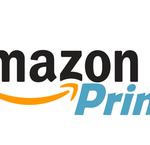There are centralized money markets and decentralized money markets. Therefore, a decentralized money market works without a central legal authority or financial institution. So, the decentralized money market allows only the original user of an account to withdraw money deposited by lenders and borrowers. Also, a healthy economy should be able to put idle capital to work, allowing people to borrow money to grow their businesses and pay expenses. A healthy economy should allow others to lend their financial assets and earn profits to increase their savings.
In simpler terms, a money market is a platform that seamlessly connects borrowers and lenders. Over time, these money markets have changed. However, its purpose has remained the same over time. Borrowers use the money markets to access a short-term loan to borrow their preferred currency while offering another currency or asset as collateral. This guarantee is essential if the borrower does not pay his debts. Eventually, if the borrower defaults, the collateral is sold to pay the lender its debts. However, the borrower can obtain the guarantee if he fulfills the obligation and pays.
Additionally, borrowers pay a fee in the form of an annual interest rate to be able to borrow working capital from lenders. The interest rate is a function of supply and demand to ensure that sufficient liquidity is available to borrowers and lenders.
However, with the rise of decentralized finance, decentralized money markets using the official website of www.immediate-edge.co/es/ they allow users to access, borrow, and lend Bitcoins with just an internet connection.
A decentralized money market is a self-governing structure managed by a smart contract and powered by blockchain technology. Below are some of the benefits of decentralized money markets.
non-directive
The funds are held by the central gatekeeper in a centralized money market, this can be a government or a financial institution, however, in a decentralized money market, borrowers and lenders have full control over their funds. No central authority in a decentralized money market controls how people spend money. Furthermore, decentralized money markets follow the predefined logic of on-chain smart contracts, thus ensuring that funds cannot be misused. Also, in a decentralized money market, users have full control over when and how they can withdraw their respective funds.
No permission required
Decentralized money markets have smart contracts, therefore users can participate without permission as they do not have to ask for permission. With permissionless decentralized money markets, users with internet access can earn profits and borrow working capital with minimal requirements and worries.
Additionally, the permissionless aspect of decentralized money markets helps create a broader user base, including the unbanked population. People in underdeveloped countries do not have access to banks, but this virtual currency allows everyone to carry out transactions. As long as you can access the internet and have a smartphone that can trade, you can easily transact this electronic currency on a decentralized money market.
envelope guaranteed
Traditional financial systems operate under sub-collateralized and fractional reserves where users can borrow more funds than they deposit as collateral. On the other hand, a decentralized money market operates in an over-guaranteed manner. That means putting up more collateral than a person is borrowing. If a borrower defaults on his debt, his collateral is forfeited. Therefore, lenders have a higher degree of security when asking borrowers to provide their collateral.
Conclusion
A decentralized money market helps end the control of a single entity and reduces points of failure. Among the many benefits that a decentralized money market offers, it allows the components of the system to operate with each other. Therefore, Bitcoin plays an important role in a decentralized money market.













![[Img #74795]](https://thelatestnews.world/wp-content/uploads/2025/01/How-weather-satellites-work-300x200.jpg)